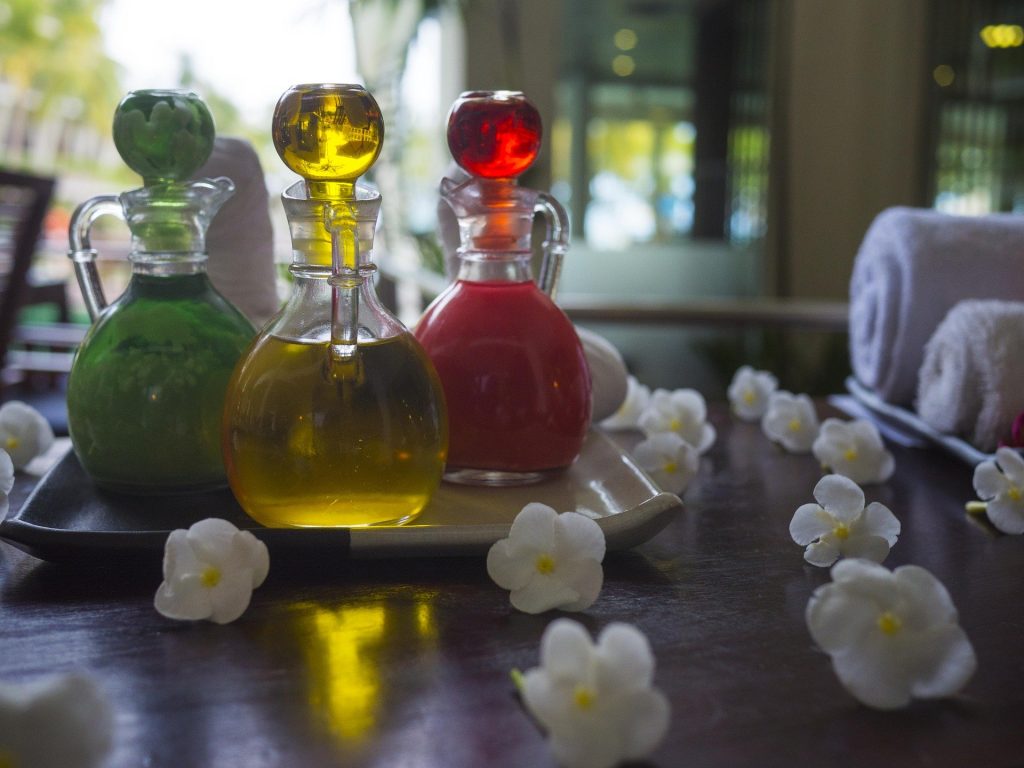The word aromatherapy comes from the Greek, from the words «aroma» meaning fragrance or pleasant smell and «therapeia» meaning healing. It really has a beneficial effect on many ailments.
For body and mind
Aromatherapy is one of the so-called alternative therapies, although in this case I would call it as complementary. It is widely practiced, and uses essential oils from aromatic plants, flowers, leaves, seeds, barks and fruits to help heal. Essential oils are normally extracted by a steam distillation process and are often used:
Holistically, where oils are used (often with massage) to treat emotional and physical disorders.
Clinically, used in combination with official medicine treatments.
Aesthetically, where perhaps its most widespread use, in which oils are used in burners or diffusers at home or are added to the bathrooms.
Why does it work?
Aromatherapy acts on our sense of smell and through absorption into the bloodstream. Approximately 15 percent of the air we inhale is directed to the roof of the nose, where olfactory receptors transport odors directly to a part of the brain called the limbic system. This area is connected with instinct, humor and emotion and aromatherapy can stimulate the release of chemicals that play an important role in our emotions. We just have to think about how any characteristic smell can return us mentally to a lived situation, be it a traumatic or satisfying experience.
Like many other therapies, ancient civilizations around the world used «aromatherapy» in many ways such as massage, baths, medicine, and even to embalm bodies.
The practice of modern aromatherapy is mainly due to the French chemist René-Maurice Gattefossé. He began the investigation of the healing powers of essential oils in the first quarter of a century after observing how lavender oil seemed to aid in the healing of a severe burn he had in one hand. In 1937 he published the first treatise on the subject, «Gattefossé aromatherapy,» a publication still available today.
Aromatherapy is unlikely to cure serious diseases, so it should not be used in these cases instead of conventional medicine. However, it can be used to relieve the psychological stress experienced by people suffering from a serious pathology, which is why I prefer to call it complementary therapy instead of alternative.
Use of essential oils
They can be used to use essential oils in aroma diffusers (electric or candle), in a bath, or in combination with another massage oil for that use.
Most frequent uses:
Relaxing: lavender (also antiseptic), chamomile, jasmine, frankincense and myrrh (both can irritate if applied to the skin or used in the bathroom), neroli, orange, tangerine, ylang-ylang (excessive inhalation can cause pain head).
Revitalizing: lemon (can irritate the skin, especially when exposed to the sun), grapefruit seed, cinnamon, juniper (also has antiseptic properties), vanilla, geranium, rosemary.
Stimulants: peppermint and eucalyptus (both act as decongestants when inhaled, but can irritate the skin, so be careful).
Other oils, such as tea tree oil, are famous for their antiseptic properties.
One tip: always follow the manufacturer’s instructions.


